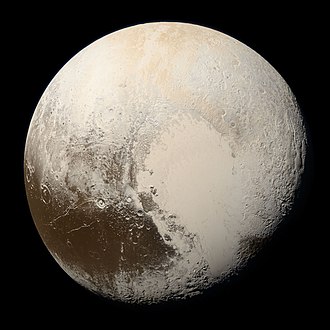Event research PLUTO World
PLUTO World tickets are on sale right now.
Are PLUTO World tickets likely to be profitable in Brooklyn, NY?
There is 1 presale for this event.

Ai Ticket Reselling Prediction
Sign Up to get artificial intelligence powered ticket reselling predictions!
Using artificial intelligence, concert attendance stats, and completed sales history for ticket prices on secondary market sites like Stubhub, we can predict whether this event is hot for resale. The Ai also considers factors like what music genre, and what market the concert is in.
Shazam is a music app that helps you identify the music playing around you. The more times an artist gets Shazamed, the higher this score will be, which should give you an idea of the popularity of this artist. Scores are ranked on a scale of 1 to 5. Learn more
Google Trends shows how popular a search query is for an artist. The more popular the artist is and the more people that are Googling them, the higher this score will be. Scores are ranked on a scale of 1 to 5. Learn more
4,084
Capacity
PLUTO World at the Brooklyn Paramount, Brooklyn, NY
Tour Schedule
PLUTO World
14 similar events found
Watch on YouTube
Listen on iTunes
Wikipedia Bio
 Pluto in true color as imaged by the New Horizons spacecraft in July 2015.[a] | |||||||||
| Discovery | |||||||||
|---|---|---|---|---|---|---|---|---|---|
| Discovered by | Clyde W. Tombaugh | ||||||||
| Discovery site | Lowell Observatory | ||||||||
| Discovery date | February 18, 1930 | ||||||||
| Designations | |||||||||
| (134340) Pluto | |||||||||
| Pronunciation | /ˈpluːtoʊ/ ⓘ | ||||||||
Named after | Pluto | ||||||||
| Adjectives | Plutonian /pluːˈtoʊniən/[1] | ||||||||
| Symbol | |||||||||
| Orbital characteristics[2][b] | |||||||||
| Epoch J2000 | |||||||||
| Earliest precovery date | August 20, 1909 | ||||||||
| Aphelion |
| ||||||||
| Perihelion | |||||||||
| |||||||||
| Eccentricity | 0.2488 | ||||||||
| 366.73 days[3] | |||||||||
Average orbital speed | 4.743 km/s[3] | ||||||||
| 14.53 deg | |||||||||
| Inclination |
| ||||||||
| 110.299° | |||||||||
| 113.834° | |||||||||
| Known satellites | 5 | ||||||||
| Physical characteristics | |||||||||
| Dimensions | 2,376.6±1.6 km (observations consistent with a sphere, predicted deviations too small to be observed)[5] | ||||||||
| Flattening | <1%[7] | ||||||||
| |||||||||
| Volume |
| ||||||||
| Mass | |||||||||
Mean density | 1.853±0.004 g/cm3[8] | ||||||||
Equatorial surface gravity | 0.620 m/s2 (0.0632 g0)[e] | ||||||||
Equatorial escape velocity | 1.212 km/s[f] | ||||||||
| |||||||||
| |||||||||
Equatorial rotation velocity | 13.53 m/s[10] | ||||||||
| 119.51° (to orbit)[3] | |||||||||
North pole right ascension | 132.993°[11] | ||||||||
North pole declination | −6.163°[11] | ||||||||
| 0.52 geometric (locally 0.08–1.0)[3] 0.72 ± 0.07 Bond[3] | |||||||||
| |||||||||
| 13.65[3] to 16.3[12] (mean is 15.1)[3] | |||||||||
| −0.44[13] | |||||||||
| 0.06″ to 0.11″[3][g] | |||||||||
| Atmosphere | |||||||||
Surface pressure | 1.0 Pa (2015)[7][14] (9.9×10−6 atm) | ||||||||
| Composition by volume | Nitrogen, methane, carbon monoxide[15] | ||||||||
Pluto (minor-planet designation: 134340 Pluto) is a dwarf planet in the Kuiper belt, a ring of bodies beyond the orbit of Neptune. It is the ninth-largest and tenth-most-massive known object to directly orbit the Sun. It is the largest known trans-Neptunian object by volume by a small margin, but is less massive than Eris. Like other Kuiper belt objects, Pluto is made primarily of ice and rock and is much smaller than the inner planets. Pluto has roughly one-sixth the mass of the Moon and one-third of its volume. Originally considered a planet, its classification was changed when astronomers adopted a new definition of planet.
Pluto has a moderately eccentric and inclined orbit, ranging from 30 to 49 astronomical units (4.5 to 7.3 billion kilometres; 2.8 to 4.6 billion miles) from the Sun. Light from the Sun takes 5.5 hours to reach Pluto at its orbital distance of 39.5 AU (5.91 billion km; 3.67 billion mi). Pluto's eccentric orbit periodically brings it closer to the Sun than Neptune, but a stable orbital resonance prevents them from colliding.
Pluto has five known moons: Charon, the largest, whose diameter is just over half that of Pluto; Styx; Nix; Kerberos; and Hydra. Pluto and Charon are sometimes considered a binary system because the barycenter of their orbits does not lie within either body, and they are tidally locked. New Horizons was the first spacecraft to visit Pluto and its moons, making a flyby on July 14, 2015, and taking detailed measurements and observations.
Pluto was discovered in 1930 by Clyde W. Tombaugh, making it the first known object in the Kuiper belt. It was immediately hailed as the ninth planet. However,[16]: 27 its planetary status was questioned when it was found to be much smaller than expected. These doubts increased following the discovery of additional objects in the Kuiper belt starting in the 1990s, particularly the more massive scattered disk object Eris in 2005. In 2006, the International Astronomical Union (IAU) formally redefined the term planet to exclude dwarf planets such as Pluto. Many planetary astronomers, however, continue to consider Pluto and other dwarf planets to be planets.
Cite error: There are <ref group=lower-alpha> tags or {{efn}} templates on this page, but the references will not show without a {{reflist|group=lower-alpha}} template or {{notelist}} template (see the help page).
- ^ "Plutonian". Oxford English Dictionary (Online ed.). Oxford University Press. (Subscription or participating institution membership required.)
- ^ Cite error: The named reference
TOP2013was invoked but never defined (see the help page). - ^ a b c d e f g h i j k Cite error: The named reference
Pluto Fact Sheetwas invoked but never defined (see the help page). - ^ Cite error: The named reference
jpl-ssd-horizonswas invoked but never defined (see the help page). - ^ a b Nimmo, Francis; et al. (2017). "Mean radius and shape of Pluto and Charon from New Horizons images". Icarus. 287: 12–29. arXiv:1603.00821. Bibcode:2017Icar..287...12N. doi:10.1016/j.icarus.2016.06.027. S2CID 44935431.
- ^ Stern, S.A.; Grundy, W.; McKinnon, W.B.; Weaver, H.A.; Young, L.A. (2017). "The Pluto System After New Horizons". Annual Review of Astronomy and Astrophysics. 2018: 357–392. arXiv:1712.05669. Bibcode:2018ARA&A..56..357S. doi:10.1146/annurev-astro-081817-051935. ISSN 0066-4146. S2CID 119072504.
- ^ a b Cite error: The named reference
Stern2015was invoked but never defined (see the help page). - ^ a b Cite error: The named reference
Brozovic2024was invoked but never defined (see the help page). - ^ Seligman, Courtney. "Rotation Period and Day Length". Archived from the original on September 29, 2018. Retrieved June 12, 2021.
- ^ "Planetary Physical Parameters". ssd.jpl.nasa.gov. Archived from the original on August 10, 2025. Retrieved October 2, 2025.
Pluto Equatorial Radius 1188.3(km) Sidereal Rotation Period -6.3872 (d)
- ^ a b Cite error: The named reference
Archinalwas invoked but never defined (see the help page). - ^ Cite error: The named reference
AstDys-Plutowas invoked but never defined (see the help page). - ^ Cite error: The named reference
jpldatawas invoked but never defined (see the help page). - ^ Amos, Jonathan (July 23, 2015). "New Horizons: Pluto may have 'nitrogen glaciers'". BBC News. Archived from the original on October 27, 2017. Retrieved July 26, 2015.
It could tell from the passage of sunlight and radiowaves through the Plutonian "air" that the pressure was only about 10 microbars at the surface
- ^ Cite error: The named reference
Physorg April 19, 2011was invoked but never defined (see the help page). - ^ Cite error: The named reference
T&Mwas invoked but never defined (see the help page).
Source: Wikipedia

